Growing up during 1920s and the Great Depression.
Living through World War II, the worst conflict in human history.
Sharing in unprecedented prosperity in the post-war Boom.
Every generation faces its own set of challenges. No generation is perfect, but each in their own way is a "great" generation. Few generations, however, have lived through such tumultuous times, or seen such dramatic technological and social changes, as the World War II generation.
Men, who as small children learned of Lucky Lindy's record-breaking trans-Atlantic flight, became pilots, navigators and bombardiers in World War II, and went on to careers as commercial airline pilots and scientists involved in the space race. Couples, whose first television set was a box with a tiny screen displaying grainy black-and-white images from a handful of channels, witnessed the progression to color television, cable TV, dish network television, and now big-screen digital TV with a multitude of channels and programs. Women who shared party line telephone service with their neighbors, and painstakingly sent handwritten letters to sons, husbands and sweethearts during the war now carry portable cell phones and email their grandchildren regularly on home computers.
African Americans who faced blatant racial discrimination in the military during the war blazed the trail for Civil Rights and opened the door for their children and grandchildren for better education and career opportunities. Women who were pulled out of traditional roles during the war to assume jobs that would free men to fight and got a taste of independence and accomplishment outside the home constituted the first wave of the Women's Rights movement, widening their daughters' expectations and breaking the glass ceiling in business and other career fields.
What were the lessons learned by Minnesota's Greatest Generation from these dramatic life experiences? What is their legacy to generations coming after them?
When asked for their life stories, the most consistent answer from this generation is "Oh, I don't have any stories to tell. I didn't do anything." Once they begin talking, however, they all have stories to tell. They all have made contributions.
The lessons learned during the dark days of the depression and the uncertainties of war are fundamental, and are a reflection of the lessons their pioneer and immigrant ancestors would have shared:
Frugal living—saving for a rainy day, making do, recycling and reusing wherever possible, and wearing things out completely.
Self-sufficiency—learning to rely on personal resources and ingenuity, the ability to make and mend things with available materials, to grow your own foodstuffs and "put them up" for future use by canning or drying them.
Doing your part—everyone pitching in, from the tallest to the smallest—children selling newspapers or delivering messages, older boys serving in the Civilian Conservation Corps and contributing their earnings to the family's budget.
Understanding that "everyone was in the same boat," whether in hard economic times or in a time of war, and accepting what life hands you with a gritty determination to survive. Those that received government assistance did so gratefully, not as a right, but as a blessing.
The example set for younger generations by this generation is also fundamental:
Moral courage—to face what life throws at you with grace, patience, and personal fortitude; to do "the right thing"; that persistence and patience can bring about change for the good.
Faith in a higher power.
Patriotism—to answer the call to defend the freedoms that we as Americans all enjoy, often at great personal sacrifice.
The value of education, and the desire to keep learning.
A sense of duty—to family, to community, to country, to the world—and a sense of purpose.
Giving back—a spirit of volunteerism, feeling the need to pay back a debt owed for blessings received.
What lasting legacy will Minnesota's Greatest Generation leave behind? This is not so easy to define, and is open to individual interpretation.
Perhaps, broadly speaking, it is "freedoms preserved." Perhaps it is "a prosperous Minnesota"—a better life for their children, grandchildren, and great-grandchildren.
On a personal level, some members of this generation feel that the lessons and values they had hoped to pass on to their descendents have been rejected in favor of the spoiled, "me first" attitude reflected by their children and grandchildren. "They don't know how good they've got it!"
Others look on their extended families with great pride and peace of mind, knowing that their legacy will live on.
What is your interpretation?
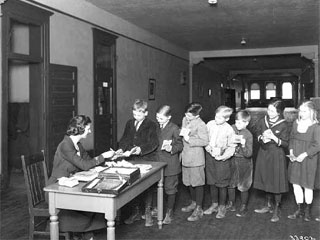
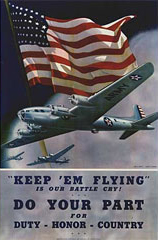
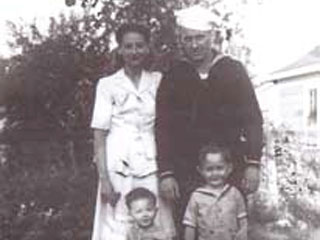
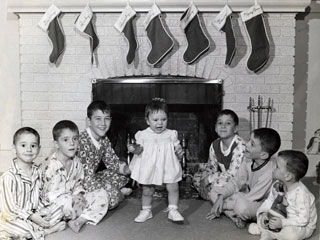
Lessons Learned: Minnesota's Greatest Generation Speaks
"Hard work pays off."
"Honesty is the best policy."
"A penny saved is a penny earned."
Life teaches lessons to us all. Minnesota's Greatest Generation learned tough life lessons while growing up during the hard times of the Great Depression, coming of age during World War II, and in building a life in the prosperous post-war Boom.
The severity of the Great Depression meant many parents without work and families without basic necessities like shelter, food and clothing. In many cases, every member of the family pitched in to help.
For author Mary Joy Breton, whose family lost their home during the Great Depression and survived in a small shack in rural Eden Prairie, lessons learned were frugality, self-discipline, and the importance of a strong work ethic.
World War II brought Americans together in an unprecedented way. They learned to put their country's interests first out of a sense of duty, whether serving in the military or working on the home front. They learned that pulling together and doing their part could help to win a war. They learned that life was short; that it could change in an instant as loved ones and comrades were lost or wounded in combat.
For veteran Kenneth Fritz the horrors witnessed during the war was a stark lesson in the loss of innocence and the necessity of facing one's own mortality. Combat infantryman Arthur R. Pederson learned the value of faith, of loyalty, of honesty and hard work, and that we create our own opportunities.
The post-war Boom was a time of unprecendented prosperity and opportunity. Members of Minnesota's Greatest Generation learned the value of a good education, and applied the strong work ethic learned in lean times to building careers, building homes, and raising families.
What are the lessons we have learned from our lives?
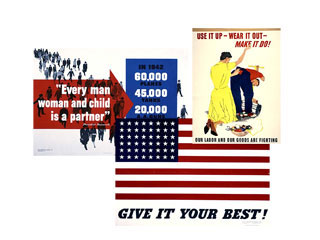
The Legacy: Younger Generations Speak
"Legacy" can be defined as something passed down by those who have come before us. Most often it is thought to be something good, something of value, though a legacy can also be a burden to those receiving it.
The legacy of Minnesota's Greatest Generation falls under both definitions. This generation set an example of personal fortitude and perseverance honed during the Great Depression, of patriotism and commitment to preserving precious freedoms during World War II, of striving for social justice, of giving back for blessings received in the post-war Boom and beyond. But this generation will also be remembered for its difficulties, among them enduring racism, high rates of alcoholism and divorce.
Jeannine Breton Baden daughter of Mary Joy Dean Breton, admires her mother's example of resourcefulness, learned in the depths of the depression, and her ability to rise above adversity.
Navy veteran Elizabeth (B.J.) Hughes Gersey's children, grandchildren, and great-grandchildren are proud of her wartime service and her deep commitment both to her country and to her family.
Rose and Jim Totino, pioneers of the frozen pizza, began a family tradition of hard work, determination, innovation and entrepreneurship.
For Linda Cameron, daughter of Bill and Marj Pelton Cameron, her parents' legacy of faith, love and humor continues to provide guidance.
What will your legacy be to future generations?

Citations:
- In Their Words: Stories of Minnesota's Greatest Generation: The Depression. Minnesota Historical Society, 2008.
- In Their Words: Stories of Minnesota's Greatest Generation: The War. Minnesota Historical Society, 2008.
- In Their Words: Stories of Minnesota's Greatest Generation: The Boom. Minnesota Historical Society, 2008.
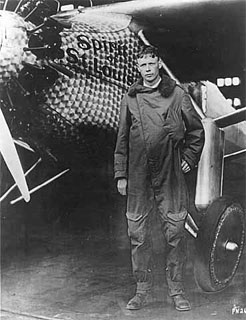 Photo: Charles Lindbergh makes historic flight to Paris, 1927.
Photo: Charles Lindbergh makes historic flight to Paris, 1927.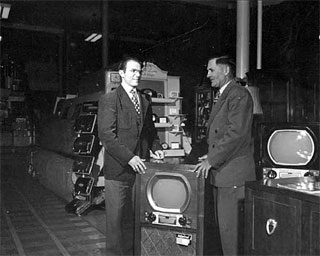 Photo: Salesman with an Admiral Television, Stillwater, 1950.
Photo: Salesman with an Admiral Television, Stillwater, 1950.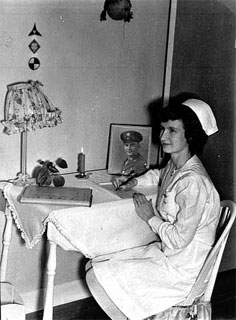 Photo: Eileen Larson Johnson as staff nurse in hospital room, Corvallis, Oregon, 1944.
Photo: Eileen Larson Johnson as staff nurse in hospital room, Corvallis, Oregon, 1944.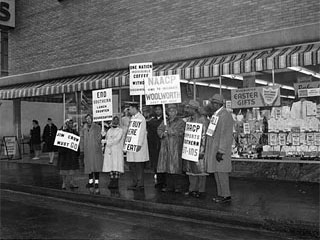 Video: KSTP video: NAACP picketing Woolworth's for integrated lunch counters, 1960.
Video: KSTP video: NAACP picketing Woolworth's for integrated lunch counters, 1960.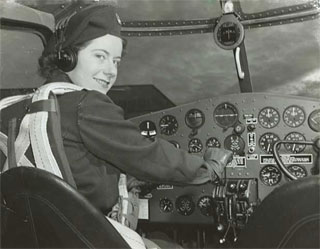 Photo: Virginia Mae Hope, Women's Air Force Service pilot, ca. 1943.
Photo: Virginia Mae Hope, Women's Air Force Service pilot, ca. 1943.
- In Their Words: Stories of Minnesota's Greatest Generation: The Depression: Getting By. Minnesota Historical Society: Minnesota's Greatest Generation Project, 2008.
- In Their Words: Stories of Minnesota's Greatest Generation: The War: Shipping Out. Minnesota Historical Society: Minnesota's Greatest Generation Project, 2008.
- In Their Words: Stories of Minnesota's Greatest Generation: The Boom: Building A Life. Minnesota Historical Society: Minnesota's Greatest Generation Project, 2008.
- Breton, Mary Joy Share Your Story: Surviving the Great Depression - Our Plunge Into Poverty. Minnesota Historical Society: Minnesota's Greatest Generation Project, 2008.
- Breton, Mary Joy Share Your Story: Living Off the Land. Minnesota Historical Society: Minnesota's Greatest Generation Project, 2008.
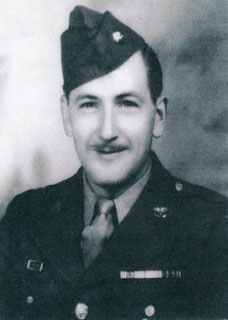 Photo: Kenneth Fritz, World War II.
Photo: Kenneth Fritz, World War II.- Pederson, Arthur Robert, Share Your Story: Arthur Robert Pederson. Minnesota Historical Society: Minnesota's Greatest Generation Project, 2008.
- In Their Words: Stories of Minnesota's Greatest Generation: The Depression. Minnesota Historical Society: Minnesota's Greatest Generation Project, 2008.
- In Their Words: Stories of Minnesota's Greatest Generation: The War. Minnesota Historical Society: Minnesota's Greatest Generation Project, 2008.
- In Their Words: Stories of Minnesota's Greatest Generation: The Boom. Minnesota Historical Society: Minnesota's Greatest Generation Project, 2008.
- Breton, Mary Joy, Share Your Story: Stories by Mary Joy Breton. Minnesota Historical Society: Minnesota's Greaetst Generation Project, 2008.
- Gersey, Eliabeth (B.J.) Hughes, Share Your Story: Stories by Elizabeth (B.J.) Hughes Gersey. Minnesota Historical Society: Minnesota's Greaetst Generation Project, 2008.
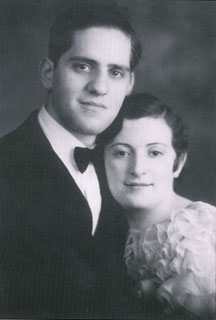 Photo: Jim and Rose Totino Cruciani before their marriage, ca. 1930s.
Photo: Jim and Rose Totino Cruciani before their marriage, ca. 1930s.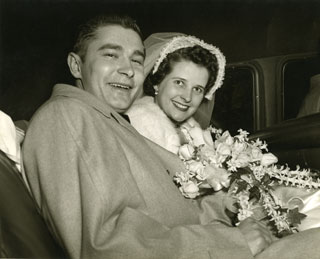 Photo: Bill and Marj Cameron, leaving the church for their wedding reception, March 19, 1952.
Photo: Bill and Marj Cameron, leaving the church for their wedding reception, March 19, 1952.


